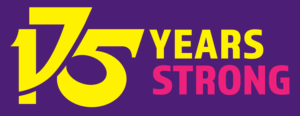The Institute’s magazine, the Scottish Educational Journal (SEJ), is the oldest and longest-running regular publication for Scotland’s teachers. Since it was established nearly 150 years ago, the SEJ has sought to keep EIS members informed on the work of the Institute and the key issues in Scottish education.
On its inception in 1876, the EIS magazine looked very different from the way it looks today. It wasn’t even called the Scottish Educational Journal in its early years, as it was initially created as The Educational News – a weekly record and review.
With a cover price of one old penny (1d), this very first edition was a newspaper-style publication, printed in extremely small – and extremely dense – type. There were no real illustrations or photographs of any kind, and the style of its reportage was very formal and extremely detailed – what appeared to be near-verbatim reports of union meetings, for example, were a prominent feature.
Issues covered in this first edition included the growth and function of the schools inspectorate, and the teaching of secondary subjects in primary schools – issues that would not look out of place in the SEJ today.
Another article – on punishment and moral training in schools – shows just how much other things have changed. In this article, reference was made to the restrictions being placed on corporal punishment: “It was unfortunate that there were some revengeful teachers who went to excess, but that was no reason why corporal punishment should be condemned.” The author went on to add, “Cases occurred where the faculties of children were so blunted that there was no way of reaching their feelings but by corporal punishment… It should be administered with a judicious calmness, so as to have its proper effect.”
The Educational News continued to be published on a weekly basis until 1918, when it was replaced by the Institute’s new publication, the Scottish Educational Journal. In its early days, the SEJ remained in newspaper format and on a weekly basis. The cover price remained 1d – untouched by inflation for more than 30 years.
By this point, illustrations had begun to appear in the SEJ, and advertisements were a regular occurrence, but articles remained extremely text heavy. In the latter part of the 20th century, the SEJ shifted from a weekly to a fortnightly and, eventually, a monthly publication.
Then, in 1998, the SEJ was re-launched in its current magazine format, published six times a year. This move away from newsprint and into glossy magazine format brought with it the first edition of the SEJ to be printed in full colour.
Issues covered in that first SEJ magazine included: the Millennium Review and its implications for Scottish education, an interview with the new Scottish education secretary, Helen Liddell, and a feature on another major change for the EIS: the launch of the Institute’s website.
The editorial in this first edition of the new SEJ said: “We hope that the new SEJ will be more accessible, interesting and informative for EIS members in all sectors of education. For the first time we will print one SEJ for every EIS member and will mail directly to members’ homes.”
This still continues today, with each member receiving their own copy of the SEJ. The current print run of the SEJ is more than 60,000.
As the 1998 editorial adds, “The Scottish Educational Journal, with a changing format and a changing name, has been around for most of the 150 [now 175] years of the EIS. We hope that a new format and style will help better inform our teacher CHRONICLING THE EIS and lecturer members in the late 1990s and beyond.”
This aspiration continues in the current iteration of the SEJ which, in addition to maintaining its printed magazine format, now also offers a digital online version. Since 2006, the SEJ has been available as a download from the EIS website and, in 2020, a more accessible and mobile-device friendly version was also launched.
The SEJ has, in the past, employed full-time editorial staff, with design and print outsourced to external companies. In the recent past, both editorial and design were brought fully in-house, with the majority of editorial work on the SEJ carried out by the EIS communications department and design by the Institute’s print room. Articles are primarily written by EIS employees and members, but with the regular inclusion of contributions from other key people in Scottish education.
In addition to being sent to all members and to every school, college and university in Scotland, the SEJ is also circulated more widely and internationally to government bodies, educational organisations, deposit libraries and universities – providing the EIS, and its members, with a powerful and influential voice across the world.
ACKNOWLEDGEMENTS:
Research, interviews and substantive writing:
Adi Bloom
Design and lay-out:
Stuart Cunningham and Paul Benzie
Additional writing and research:
EIS Comms Team and assorted staff members
Printed by:
Ivanhoe Caledonian, Seafield Edinburgh
Photography:
Graham Edwards, Mark Jackson, Elaine Livingston, Toby Long, Ian Marshall, Alan McCredie, Alan Richardson, Graham Riddell, Lenny Smith, Johnstone Syer, Alan Wylie


Thanks to the many former activists and officers who gave of their time to be interviewed and taken a stroll down memory lane. And of course a very special thanks to the EIS members who created this history through their activism and commitment to the cause of Scottish Education.
© 2022 The Educational Institute of Scotland